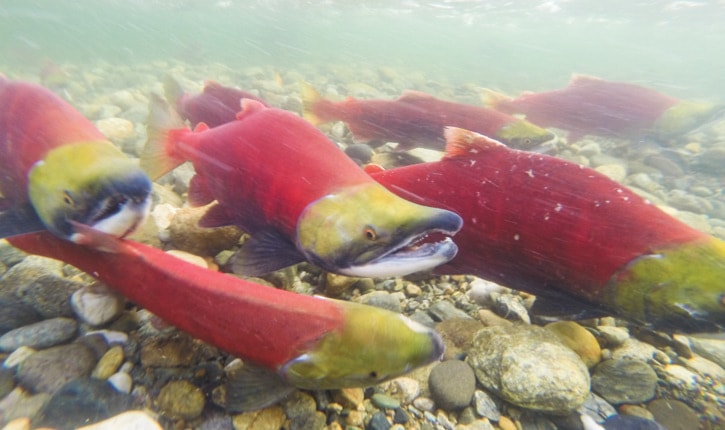Are they late, or are they not coming?
This is a quandary Fisheries and Oceans Canada is facing with the early summer sockeye stocks which spawn in Scotch Creek and Seymour River.
On Friday, Aug. 7, The Pacific Salmon Commission and the Fraser River Panel reduced initial estimates of a probable run in the neighbourhood of 837,000 early summers to 424,000.
“Through test fisheries and sampling of DNA they construct a run size and run timing estimates,” says Stu Cartwright, acting area director of the federal Fisheries and Oceans Canada for the B.C. Interior. “The DNA confirms their origins.”
Cartwright says during the first seven to 10 days of the run, scientists were predicting almost double the number of salmon heading to the Shuswap.
“The bottom line is, they are now more confident there will be at least 424,000 and we’re not sure it will bump up again,” he says, noting more test fisheries and DNA sampling this coming Friday should provide a clearer picture. “They could be seven to 10 days late, or they may just not be there.”
An observer at Hell’s Gate Canyon recorded a steady stream of sockeye passing the observation point last Friday.
On the same day, DNA analysis in a test fishery at the approach of Juan de Fuca Strait north of Victoria toward Port Renfrew showed approximately 13 per cent of early summers still present as they have been in varying numbers since testing began in mid July.
Eighty-six per cent were summer run sockeye and only one percent was late-run sockeye, which means they are a bit late in congregating offshore.
Cartwright says that out of the 424,000 early summer sockeye estimated to be in this year’s run, it looks like the early Thompson component (Scotch Creek and Seymour River) is the group that seems to be significantly less abundant.
On Aug. 6, the Fraser River discharge at Hope recorded streamflow of 2,530 cubic metres per minute, which is 36 per cent below average discharge for that day.
The water temperature at a site near Yale was 18.7 C, approximately .7 degrees higher than average for this date.
“So we’re taking a precautionary management approach due to the higher-than-average temperatures and river conditions that continue to be less than ideal for migrating sockeye,” Cartwright says, noting that fisheries officials are hoping to see more precipitation and cooler temperatures later this week.
But he cautions, even half a degree in temperature can affect sockeye.
And while it’s a bit early to estimate, Cartwright says officials are hoping the picture for the later summer sockeye stocks will be better.
“That’s where we’re hoping the strength of the run will be,” he said Monday. “But we don’t know at this point of time whether they will be here, weaker or stronger.”
At this time salmon fisheries remain closed other than First Nations food, social and ceremonial fisheries.
